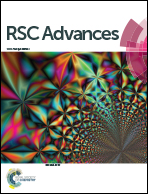Structural and physico-chemical properties of insoluble rice bran fiber: effect of acid–base induced modifications
Abstract
The structural modifications of insoluble rice bran fiber (IRBF) by sequential regimes of sulphuric acid (H2SO4) and their effects on the physicochemical attributes were studied. The increment of H2SO4 concentration resulted in decreased water holding capacity that ultimately enhanced the oil binding capacity due to the partial removal of starch, protein and hemicelluloses. The starch and hemicelluloses were hydrolyzed exponentially by sequential increments of H2SO4 while protein was mainly dissolved by KOH for all samples. Moreover, higher H2SO4 concentration improved the porosity and crystallinity that led to higher thermal stability of the fiber as evident from XRD and TGA analysis. Furthermore, decreased monosaccharide linkages and increases of porosity with H2SO4 regimes were confirmed by FT-IR and SEM. The change in composition and microstructure of insoluble rice bran fiber (IRBF) induced significant physicochemical changes that might be suitable for their application in the food industry as an anti-diabetic and cholesterol lowering functional ingredient.


 Please wait while we load your content...
Please wait while we load your content...